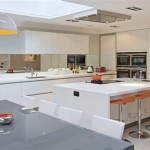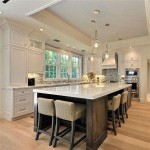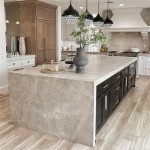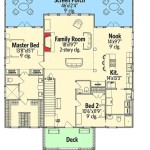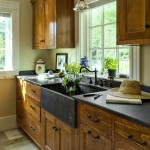Kitchen Remodeling Park Ridge IL: A Comprehensive Guide
Kitchen remodeling in Park Ridge, Illinois, is a significant undertaking that can dramatically improve a home's value, functionality, and aesthetic appeal. Whether a homeowner desires a complete overhaul or a more targeted renovation, understanding the process, potential challenges, and available resources is crucial for a successful project. This article provides a comprehensive guide to kitchen remodeling in Park Ridge, focusing on key aspects from planning and budgeting to design considerations and contractor selection.
Park Ridge, a vibrant suburban community, features a diverse range of architectural styles, which influences kitchen remodeling trends. Many homeowners seek designs that blend seamlessly with the existing character of their homes while incorporating modern conveniences and energy-efficient solutions. The goal is often to create a space that is both beautiful and practical, meeting the specific needs of the household.
Before embarking on a kitchen remodel, it is essential to establish clear goals and objectives. What are the primary reasons for remodeling? Is it to update outdated features, increase storage space, improve workflow, or enhance the overall aesthetic? Clearly defining these goals will guide the entire decision-making process, from layout design to material selection.
Planning and Budgeting for a Kitchen Remodel
Detailed planning is the cornerstone of a successful kitchen remodel. This phase involves assessing current space limitations, envisioning the desired outcome, and developing a realistic budget. Failing to plan adequately can result in cost overruns, project delays, and dissatisfaction with the final result.
The first step in planning is to measure the existing kitchen space accurately. These measurements should include the dimensions of walls, windows, doors, and any existing appliances. Creating a detailed floor plan will help visualize different layout options and identify potential challenges. Online kitchen design tools and software can be valuable resources for this initial planning phase.
Establishing a realistic budget is perhaps the most critical aspect of kitchen remodeling. Kitchen remodels can range significantly in cost, depending on the scope of the project, the quality of materials used, and the complexity of the design. A detailed budget should include estimates for all aspects of the project, including demolition, construction, plumbing, electrical work, cabinetry, countertops, appliances, flooring, lighting, and hardware.
It's also prudent to allocate a contingency fund, typically 10-15% of the total budget, to cover unexpected expenses. Unforeseen issues, such as hidden plumbing problems or structural repairs, can arise during the remodeling process. Having a contingency fund in place will help mitigate financial stress and ensure the project stays on track.
When budgeting, consider the long-term value of the remodel. Investing in high-quality materials and appliances can increase the home's value and reduce maintenance costs over time. Energy-efficient appliances and water-saving fixtures can also lead to significant savings on utility bills.
Financing options for kitchen remodeling projects include personal loans, home equity loans, and lines of credit. It's essential to research different financing options and compare interest rates and repayment terms to find the best fit for the individual's financial situation.
Design Considerations and Material Selection
The design of a kitchen remodel should reflect both the homeowner's personal style and the functional requirements of the space. Key design considerations include layout, workflow, storage, lighting, and aesthetics.
The kitchen layout is the foundation of the design. Common layout options include the one-wall, galley, L-shaped, U-shaped, and island layouts. The optimal layout will depend on the size and shape of the kitchen, as well as the homeowner's preferences and cooking habits. The "kitchen work triangle," which connects the sink, refrigerator, and stove, is a fundamental concept in kitchen design. An efficient work triangle minimizes movement and maximizes workflow.
Adequate storage is essential for a functional kitchen. Cabinetry is the primary storage solution, and a variety of styles, materials, and configurations are available. Custom cabinetry offers the most flexibility in terms of design and storage options, but it is also the most expensive. Stock and semi-custom cabinets are more affordable options that can still provide ample storage space.
Countertops are a key element of kitchen design, both aesthetically and functionally. Common countertop materials include granite, quartz, marble, butcher block, and laminate. Each material has its own unique characteristics in terms of durability, maintenance, and cost. Granite and quartz are popular choices for their durability and resistance to heat and stains. Marble is a luxurious option but requires more maintenance. Butcher block adds warmth and character but needs regular oiling to prevent cracking. Laminate is the most affordable option but is less durable than other materials.
Flooring is another important design consideration. Tile, hardwood, laminate, and vinyl are common flooring options for kitchens. Tile is durable, water-resistant, and easy to clean. Hardwood adds warmth and elegance but requires more maintenance. Laminate and vinyl are affordable options that are also water-resistant.
Lighting plays a crucial role in creating a functional and inviting kitchen space. A well-lit kitchen should have a combination of ambient, task, and accent lighting. Ambient lighting provides overall illumination, task lighting illuminates specific work areas, and accent lighting highlights architectural features or decorative elements. Under-cabinet lighting is particularly useful for illuminating countertops and improving visibility while cooking.
Appliances are another important design consideration. Selecting energy-efficient appliances can save money on utility bills and reduce environmental impact. Stainless steel appliances are a popular choice for their sleek and modern look. Integrated appliances, which are designed to blend seamlessly with the cabinetry, can create a more cohesive and streamlined design.
Contractor Selection and Project Management
Selecting the right contractor is crucial for a successful kitchen remodel. A qualified and experienced contractor can provide valuable guidance, manage the project effectively, and ensure that the work is completed to a high standard. Park Ridge has numerous reputable contractors specializing in kitchen remodeling.
When selecting a contractor, it is important to obtain multiple bids from different companies. This will allow for a comparison of pricing, services, and timelines. Before hiring a contractor, check their credentials, including licenses and insurance. Verify that the contractor is properly licensed and insured to protect against liability in case of accidents or damages.
Read online reviews and ask for references from previous clients. Contacting previous clients can provide valuable insights into the contractor's work ethic, communication skills, and overall performance. A reputable contractor should be able to provide a list of satisfied clients who are willing to speak about their experience.
A detailed contract is essential for protecting both the homeowner and the contractor. The contract should clearly outline the scope of work, the timeline, the payment schedule, and any warranties. It should also specify the materials to be used and the responsibilities of each party.
Effective project management is crucial for keeping the kitchen remodel on track and within budget. The contractor should provide regular updates on the progress of the project and address any concerns promptly. Clear communication is essential for resolving issues and ensuring that the homeowner is satisfied with the work.
During the remodeling process, it is important to be prepared for temporary disruptions to the household. The kitchen will be out of commission for a period of time, and there will be noise and dust associated with the construction. Setting up a temporary kitchen in another part of the house can help minimize inconvenience.
Final inspection and walk-through are crucial steps. Once the remodeling is complete, conduct a thorough inspection of the work to ensure that everything meets the agreed-upon specifications. Create a punch list of any items that need to be corrected or addressed. The contractor should be responsible for completing all items on the punch list in a timely manner.
Maintaining open communication with the contractor throughout the project is essential for addressing concerns and ensuring that the work meets expectations. Regular meetings and site visits can help keep the project on track and prevent misunderstandings.
Kitchen remodeling in Park Ridge, IL, is a multifaceted process that requires careful planning, budgeting, and execution. By understanding the key considerations and working with qualified professionals, homeowners can create the kitchen of their dreams, enhancing the value and enjoyment of their homes for years to come. Detailed research will equip you with the knowledge to navigate this process successfully.

Kitchen Remodel In Park Ridge Il Regency Home Remodeling

Kitchen Remodel Park Ridge Regency Home Remodeling
Kitchen Remodel In Park Ridge Il Regency Home Remodeling
Kitchen Remodel In Park Ridge Il Regency Home Remodeling

Park Ridge Il Kitchen Remodeling Modern Chicago By Rosseland Houzz Ie
Kitchen Remodel In Park Ridge Il Regency Home Remodeling

Park Ridge Kitchen Remodel Regency 773 930 4465

Complete Kitchen Remodeling Chicago Il Park Ridge

Park Ridge Il Kitchen Remodel Transitional Chicago By 4ever Remodeling Houzz

Kitchen And Bath Remodeling In Park Ridge Il New Cabinets Cabinet Refacing Pro

